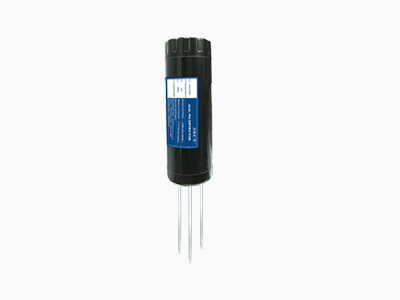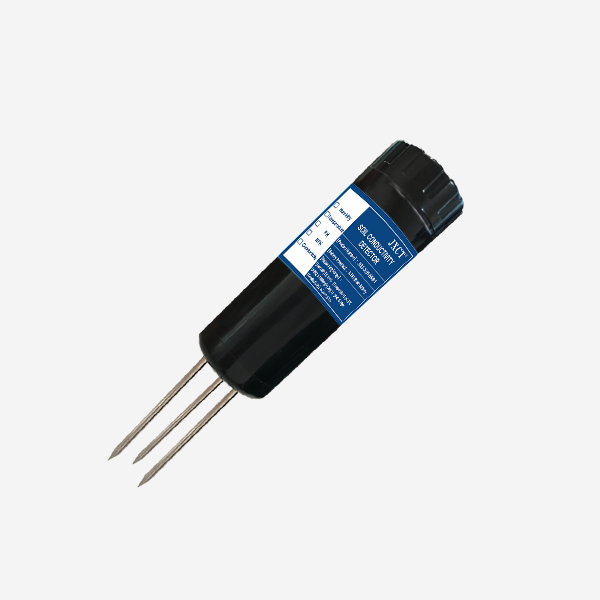Introduction Agriculture has been the backbone of human civilization for thousands of years, providing food, fiber, and other essential resources. With the world’s population expected to reach 9.7 billion by 2050, the demand for agricultural products is set to increase significantly. This places immense pressure on farmers to produce more food while facing challenges such as climate change, water scarcity, and soil degradation. In this context, the integration of soil sensor innovations in agriculture has emerged as a promising solution to enhance productivity, sustainability, and efficiency. This article explores the role of soil sensor technologies in revolutionizing agriculture and the potential impact they can have on global food security.

Understanding Soil Sensor
Innovations Soil sensors are devices that are designed to measure and monitor various parameters of soil, such as moisture content, temperature, nutrient levels, and pH. These sensors can be deployed in the field to provide real-time data on soil conditions, enabling farmers to make informed decisions about irrigation, fertilization, and crop management. Traditional agricultural practices often rely on subjective assessments of soil conditions, leading to inefficiencies and suboptimal yields. Soil sensor innovations offer a data-driven approach to farming, allowing for precision agriculture and resource optimization.
The Advantages of Soil Sensor Innovations The integration of soil sensor innovations in agriculture offers several key advantages that can transform the way farming is practiced:
Precision Farming:
Soil sensors enable farmers to adopt a precision farming approach by providing detailed insights into the spatial and temporal variability of soil conditions. This allows for targeted application of water, fertilizers, and other inputs, reducing waste and environmental impact.
Improved Resource Management:
By accurately measuring soil moisture and nutrient levels, soil sensors help farmers optimize their resource management strategies. This leads to more efficient use of water and fertilizers, reducing costs and minimizing the risk of nutrient runoff and groundwater contamination.
Enhanced Crop Yields:
With real-time data on soil conditions, farmers can proactively address issues such as water stress, nutrient deficiencies, and pH imbalances, leading to healthier crops and higher yields. Soil sensor innovations empower farmers to take timely corrective actions to ensure optimal plant growth and productivity.
Sustainable Practices:
By promoting precision agriculture and resource efficiency, soil sensor technologies contribute to the adoption of sustainable farming practices. This can lead to reduced environmental impact, preservation of natural resources, and long-term resilience in the face of climate change.
Case Studies and Success Stories
Several real-world examples demonstrate the transformative potential of soil sensor innovations in agriculture. In California’s Central Valley, a region known for its intensive agriculture, farmers have been deploying soil moisture sensors to optimize irrigation practices. By using real-time data to schedule irrigation based on actual crop water needs, farmers have reported significant water savings and improved crop yields. Similarly, in the Midwest corn belt of the United States, farmers are leveraging soil nutrient sensors to tailor their fertilization strategies, leading to more efficient use of nutrients and reduced environmental impact.
In addition to the developed world
soil sensor innovations are also making a difference in smallholder farming communities in developing countries. In sub-Saharan Africa, where agriculture is the primary source of livelihood for millions of people, the adoption of soil sensors has empowered farmers to make better decisions about water management and crop nutrition. This has translated into improved food security, increased incomes, and resilience to climate-related challenges.
Challenges and Opportunities
While soil sensor innovations hold great promise for agriculture, there are challenges that need to be addressed for widespread adoption and impact:
Cost and Accessibility:
The initial investment in soil sensor technologies can be a barrier for smallholder farmers and resource-constrained agricultural communities. Efforts are needed to make these innovations more affordable and accessible, particularly in developing regions.
Data Interpretation and Integration:
Collecting data from soil sensors is only the first step. Farmers need support in interpreting the data and integrating it into their decision-making processes. This requires capacity building, training, and extension services to ensure that farmers can derive maximum benefit from soil sensor technologies.
Interoperability and Standards:
As the market for soil sensor technologies expands, there is a need for interoperability and standardization to ensure that different sensor systems can communicate and share data seamlessly. This will facilitate the development of comprehensive agricultural management platforms that integrate soil sensor data with other relevant information.
Regulatory and Policy Support:
Governments and regulatory bodies play a crucial role in incentivizing the adoption of soil sensor innovations through policies that promote sustainable agriculture, provide financial support, and facilitate research and development in this field.
Looking Ahead As we look to the future of agriculture, soil sensor innovations are poised to play a central role in driving productivity, sustainability, and resilience. The convergence of soil sensor technologies with other advancements such as precision agriculture, machine learning, and remote sensing holds the potential to revolutionize farming practices on a global scale. By harnessing the power of data and technology, farmers can grow smarter, making informed decisions that optimize resource use, protect the environment, and ensure food security for a growing population.

Conclusion The integration of soil sensor innovations
in agriculture represents a significant opportunity to enhance the efficiency and sustainability of farming practices. By providing real-time data on soil conditions, these technologies empower farmers to make informed decisions that lead to improved crop yields, resource efficiency, and environmental stewardship. As we confront the challenges of feeding a growing global population in the face of climate change and resource constraints, soil sensor innovations offer a pathway towards a more resilient and productive agricultural sector. With continued investment, innovation, and collaboration, soil sensor technologies can drive transformative change in the way we grow our food, ensuring a more sustainable and food-secure future for generations to come.
In conclusion
the integration of soil sensor innovations in agriculture is a pivotal step towards growing smarter and enhancing the resilience and productivity of farming practices. By leveraging real-time data and technology, farmers can optimize their resource management, improve crop yields, and promote sustainable agricultural practices. As we face the challenges of feeding a growing global population in the context of climate change and environmental degradation, soil sensor innovations offer a promising solution to ensure food security and long-term sustainability in agriculture.
